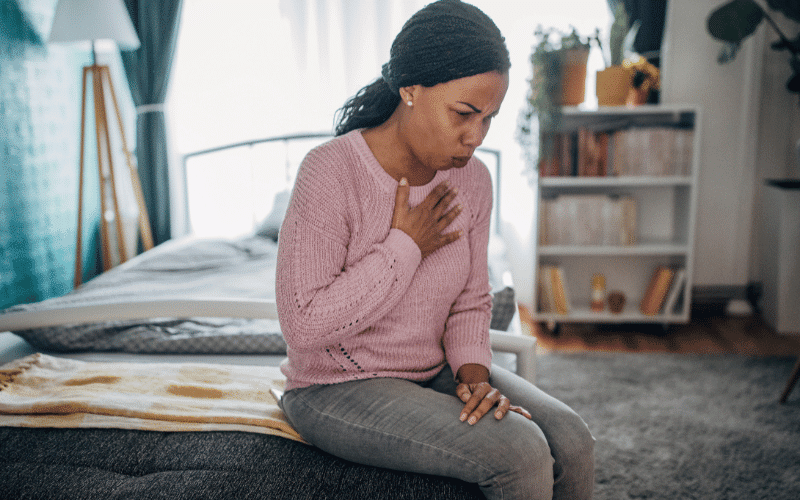Symptom 2: Shortness of Breath – What You Need to Know

Shortness of breath, clinically referred to as dyspnea, is another common symptom of dilated cardiomyopathy. It’s described as a sensation of struggling to breathe or feeling suffocated. In the context of cardiomyopathy, this symptom can reveal a lot about the state of a person’s heart health.
With dilated cardiomyopathy, the heart can’t pump blood efficiently, which can lead to fluid build-up in the lungs. This fluid interferes with the lungs’ ability to expand and contract freely, resulting in a sensation of breathlessness. The severity of this symptom often varies, ranging from mild to severe and can be influenced by physical activity.
Many individuals first notice this symptom during physical exertion – for instance, when climbing stairs or walking. The need for oxygen increases with physical activity, but a heart affected by dilated cardiomyopathy struggles to meet this increased demand. The result is a feeling of breathlessness, even with mild exertion.
However, as the condition progresses, shortness of breath can also occur during periods of rest or while lying down. This type of breathlessness, especially when it interrupts sleep, is a cause for concern and should be evaluated by a healthcare professional immediately.
Shortness of breath can greatly impact a person’s quality of life, restricting physical activities and causing distress. Recognizing this symptom and seeking medical advice promptly can pave the way for early treatment, improving outcomes and quality of life. (2)